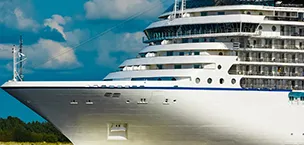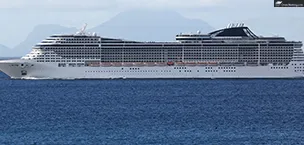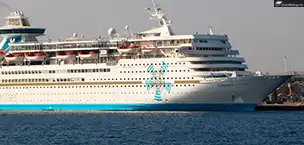A press release from Hurtigruten Norway says the company has launched an innovative research project in partnership with SINTEF and 12 maritime partners.
In the future, passenger ships will be powered by zero-emission solutions developed by the consortium. A cruise ship that is energy-efficient and sustainable will be built from cutting-edge research by 2030, based on cutting-edge research.
There is a total budget of €13 million for the Sea Zero research and development phase and €7 million has been awarded in public funding for this project, which aims to develop innovative solutions for energy efficiency, battery technology, propulsion technology, hull design, sustainable building practices, and onboard hotel operations in order to minimize energy consumption.
With the first ship scheduled to be delivered by 2030, the project builds on Hurtigruten’s 130-year legacy of pioneering and aims to develop zero-emission vessels specifically for the Norwegian coast. Hurtigruten Norway intends to improve the sustainability of the cruise industry and the future of travel with its zero-emission technology. Only 0.1% of all vessels worldwide currently use this technology.
A new build project will start in 2023 and run until 2025. With zero emissions both to sea and air, the new ships could be one of the most revolutionary ships ever built.
The ship will be built with the highest level of energy efficiency possible. “It is our goal to reduce energy use, waste and emissions as much as possible,” said Hurtigruten Norway’s SVP for Marine Operations Gerry Larsson-Fedde.
It is unacceptable for consumers to continue using heavy fuel oil or to set climate targets that are far behind the Paris Agreement.”. “Zero-emission ships will completely transform our industry.”
Approximately 50% of the ship’s total energy is used by the onboard hotel operations, one of the main focus areas of the project. The project’s success depends on developing new energy solutions, since batteries replace traditional engines, which cannot use waste heat from engines.
Developing and demonstrating zero-emission ships and making available new green technologies to a large and global market are some of the ways that Sea Zero can impact the cruise and passenger transport industry. Several hundred million euros could be created by the project up to 2030, with the first zero-emission ship being the key to realizing most of the potential.
Sale on Oceania Cruises includes ‘All Three Amenities for Free’
On 83 sailings in 2023 and 2024, Oceania Cruises is offering its OLife Ultimate “All Three for Free” sale. Furthermore, guests receive an additional $800 in shipboard credit for use […]
MSC Preziosa Turns 10 Years Old
MSC Preziosa celebrates ten years this month. MSC Cruises took delivery of the 140,000-ton vessel on March 13, 2013, built at the Chantiers de l’Atlantique shipyard in St. Nazaire. The […]
Making an Icon Extra is now available
“Icon Extra: A Top Deck Challenge on Royal Caribbean’s Icon of the Seas,” is the latest Making an Icon Extra video. Watch new video of the Icon Extra, “The Top […]
Turkey receives aid supplies from Celestyal
During the 7.8 magnitude earthquake that hit Turkey and northern Syria, Celestyal Cruises partnered with the Disaster and Emergency Management Authority (AFAD) and provided blankets and sleeping bags to residents. […]


